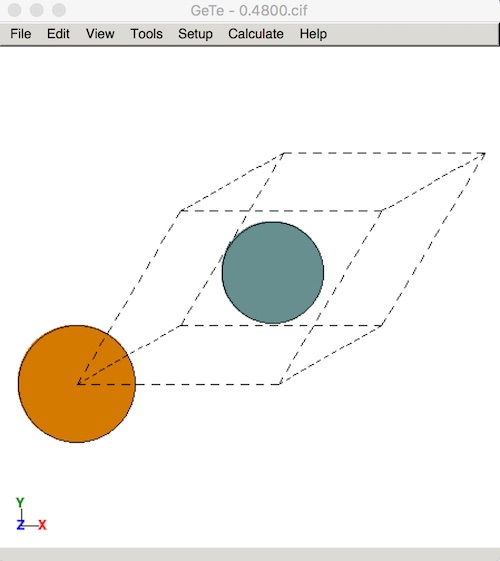El Capitan for Computational Materials Science in 2016
January 3, 2016
Every few years, I give my laptop a fresh start and remove all the debris (applications, libraries, updates) that have built up. This time I started with a clean install of Mac OS 10.11 (El Capitan).
- Basics
The first step is to install the essentials including Dropbox, Evernote, Todoist, Xcode (with xcode-select --install), Slack, Mendeley, MS Office, gcc/gfortran, Python superpack, VESTA, Transmission, Mactex, Texmaker, Unrar, VLC, Adobe Creative Suite, iTerm, Textmate, XQuartz.
- Fortran
While it is possible to survive using gfortan and freely available maths libraries, Intel Fortran and MKL tend to be faster and better tested (easier to compile) in my experience. For non-commericial purposes Intel Composer is now free for OS X. The package installs in a few clicks, but be sure source the variables in your .bash_profile:
source /opt/intel/mkl/bin/mklvars.sh intel64
source /opt/intel/bin/ifortvars.sh intel64
Finally you will need to make the MKL fast fourier transforms (FFTs) for use in most solid-state simulation packages:
cd $MKLROOT/interfaces/fftw3xf/
sudo make libintel64 CC=gcc
The outcome:
Arons-Air-V:~ aron$ which ifort
/usr/local/bin/ifort
Arons-Air-V:~ aron$ ifort --version
ifort (IFORT) 16.0.1 20151020
- Openmpi
To enable parallelism, I downloaded the latest source code of openmpi (1.10.1).
./configure -prefix=/usr/local/openmpi-1.10.1 CC=gcc FC=ifort F77=ifort
make
sudo make install
be patient… it can easily take 20 minutes. Finally add to your .bash_profile:
export DYLD_LIBRARY_PATH=$DYLD_LIBRARY_PATH:/usr/local/openmpi-1.10.1/lib/
export PATH=./:/usr/local/openmpi-1.10.1/bin:$PATH
The outcome:
Arons-Air-V:~ aron$ which mpif90
/usr/local/openmpi-1.10.1/bin/mpif90
Arons-Air-V:~ aron$ mpif90 --version
ifort (IFORT) 16.0.1 20151020
- Phonopy
We use this open-source lattice-dynamics package a lot in our research. There are a few more libraries to install first:
sudo easy_install pip
pip2 install lxml
pip2 install pyyaml
export CC=/usr/local/bin/gcc
then after expanding the source code, simply type:
python setup.py install
The outcome:
Arons-Air-V:~ aron$ phonopy
_
_ __ | |__ ___ _ __ ___ _ __ _ _
| '_ \| '_ \ / _ \| '_ \ / _ \ | '_ \| | | |
| |_) | | | | (_) | | | | (_) || |_) | |_| |
| .__/|_| |_|\___/|_| |_|\___(_) .__/ \__, |
|_| |_| |___/
1.10.9
- Phono3py
If harmonic phonons are not enough for you, then Phono3py lets you calculate phonon-phonon interactions, but it gets very computationally expensive. We need to install hdf5 (for more efficient data management):
pip2 install h5py
and lapacke for faster code. Download the latest version of lapack and:
cp make.inc.example make.inc
make lapackelib
Then you are ready to compile. Download Phono3py and modify setup3.py to link to your compiled lapacke library.
if platform.system() == 'Darwin':
include_dirs += ['/Users/aron/Documents/progs/lapack/lapack-3.6.1/lapacke/include']
extra_link_args = ['/Users/aron/Documents/progs/lapack/lapack-3.6.1/liblapacke.a']
python setup3.py install
The outcome:
Arons-Air-V:~ aron$ phono3py
_ _____
_ __ | |__ ___ _ __ ___|___ / _ __ _ _
| '_ \| '_ \ / _ \| '_ \ / _ \ |_ \| '_ \| | | |
| |_) | | | | (_) | | | | (_) |__) | |_) | |_| |
| .__/|_| |_|\___/|_| |_|\___/____/| .__/ \__, |
|_| |_| |___/
1.10.9
- VASP
While we use a range of electronic structure packages, VASP is the old reliable. I downloaded the latest version (5.4.1), which has streamlined the install process.
cp ./arch/makefile.include.linux_intel ./makefile.include
which needs to be modified to point to the correct compilers (here gcc, ifort and mpifort). We will also remove -DscaLAPACK from the precompiler options and set SCALAPACK = . There are now three patches/bug fixes to install:
patch -p1 < patch.5.4.1.08072015
patch -p1 < patch.5.4.1.27082015
patch -p1 < patch.5.4.1.06112015
and one fix to sort out a gcc error. To the file ./src/lib/getshmem.c add one line at the end of the include statements:
#define SHM_NORESERVE 010000
The outcome:
Arons-Air-V:test aron$ mpirun -np 4 ../vasp_std
running on 4 total cores
distrk: each k-point on 4 cores, 1 groups
distr: one band on 1 cores, 4 groups
using from now: INCAR
vasp.5.4.1 24Jun15 (build Jan 02 2016 21:20:37) complex
- ASE
The atomistic simulation environment is a useful set of Python tools and modules. It now installs, including the gui, in two lines:
brew install pygtk
pip install python-ase
The outcome:
ase-gui

I will update with more codes and tools as I find time.
